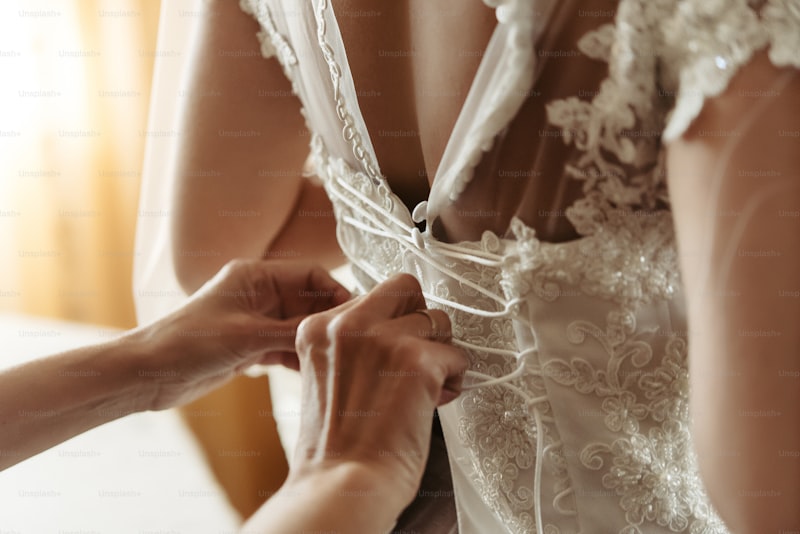How to Budget for a Wedding Dress: Essential Tips and Considerations
Planning a wedding is an exciting yet challenging experience, and one of the most significant expenses involved is the wedding dress. A wedding dress is not just an outfit; it's a symbol of love, commitment, and a day that many dream about for years. Determining how to budget for a wedding dress can alleviate financial stress and help you find the perfect gown without breaking the bank. In this article, we will explore effective budgeting strategies, common costs associated with Wedding dresses, and tips to ensure you have the dress of your dreams.
Understanding Wedding Dress Costs
The first step to budgeting for a wedding dress is understanding the potential costs involved. Wedding dresses can vary widely in price, from affordable options to high-end designer gowns. Here are some factors to consider:
- Designer vs. non-designer: Designer Wedding dresses often come with a hefty price tag, while non-designer or off-the-rack dresses provide more budget-friendly options.
- Fabric and embellishments: The type of fabric and embellishments used can significantly influence the cost. For example, lace and silk tend to be more expensive than polyester.
- Alterations: It's important to factor in the cost of alterations, which can range from $100 to $500 depending on the complexity of the changes needed.
- Accessories: Remember to budget for accessories like veils, shoes, and underskirts, which can add to your overall expenditure.
Average Costs of Wedding dresses
To help visualize the costs, here’s a breakdown of the average prices:
| Type of Wedding Dress | Average Price Range |
| Off-the-Rack | $100 - $1,000 |
| Made-to-Order | $1,000 - $3,000 |
| Designer Gowns | $3,000 - $10,000+ |
Setting Your Budget
Once you have a clear understanding of the costs, it is vital to set a realistic budget. Here are several steps to help you create an effective wedding dress budget:
1. Determine Your Total Wedding Budget
Your wedding dress budget should be a percentage of your overall wedding budget. According to industry experts, the dress typically accounts for about 10-15% of the total wedding cost. If your overall budget is $20,000, you should allocate around $2,000 to $3,000 for your wedding dress.
2. Research and Compare Prices
Start researching different bridal salons, boutiques, and online retailers. Take the time to compare prices and styles to find options that suit your aesthetic and financial plan. Websites like The Knot and Wedding Wire often provide valuable insights into local shops and dress prices.
3. Consider Pre-Owned Dresses
Look into purchasing a pre-owned wedding dress. Websites like Stillwhite and Nearly Newlywed offer a wide selection of gently worn dresses that can save you a significant amount of money. This option is ideal for brides on a tight budget looking to wear a designer gown at a fraction of the price.
4. Don’t Forget Additional Costs
Beyond the dress, remember to account for alterations, cleaning, and storage fees. Setting aside an additional 15-20% of your dress budget for these costs can help avoid surprises later on.
Finding the Perfect Wedding Dress
Now that you have set your budget, it’s time to embark on the journey to find the perfect wedding dress. Here are some tips to maximize your dress shopping experience:
1. Start Early
Begin your search at least six to nine months before your wedding. This allows sufficient time for fittings, alterations, and any necessary changes. The earlier you start, the more options you will have.
2. Make Appointments
When visiting bridal shops, it's wise to make appointments in advance. This will ensure you receive personalized attention and can make the most of your time trying on dresses.
3. Bring the Right People
Decide who you want to bring with you to your dress fittings. Surround yourself with supportive and honest friends or family who can provide constructive feedback and help you make the right choice.
4. Stay True to Your Style
While it can be tempting to choose a dress that is trendy, remember to stay true to your personal style. Choose a dress that makes you feel beautiful and confident on your special day.

Conclusion
Budgeting for a wedding dress may seem daunting, but with proper planning and research, it can be a rewarding process. Remember to set a realistic budget, explore different shopping options, and remain true to your personal style. Don't be afraid to ask for advice or seek out pre-owned options, as these can lead to both savings and the chance to find a unique gown that reflects your personality.
As you embark on this significant journey, keep in mind some key considerations:
- Plan ahead: Start your search early to avoid last-minute stress.
- Stick to your budget: Be honest with yourself about what you can afford and avoid overspending.
- Enjoy the process: Finding your wedding dress is a once-in-a-lifetime experience. Cherish every moment!
By following these tips, you will not only allocate your funds wisely but also find a stunning wedding dress that you will cherish forever.